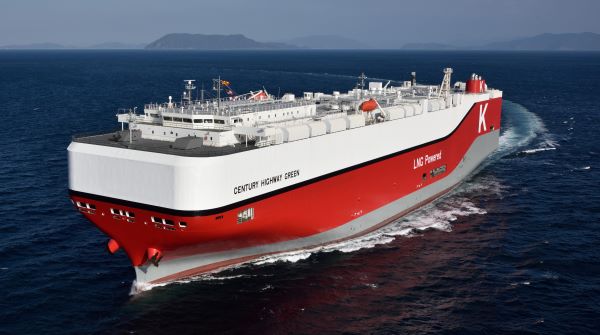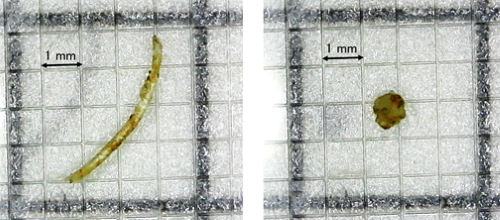October 4, 2021
Kawasaki Kisen Kaisha, Ltd.
Kawasaki Kisen Kaisha, Ltd. (“K” LINE) announced today the signing of a joint research agreement with Tokyo University of Marine Science and Technology (TUMSAT) to start joint research on marine plastics. The TUMSAT has been leading research in this field, surveying the amount of marine plastic waste (Note 1), including microplastics (plastic particles 5 mm or less) floating in the world’s oceans. This joint research will use “K” LINE’s vessels, which navigate many seas around the world, to collect samples of plastic particles, and is expected to promote the study of marine plastic waste.
The joint research will evaluate how much plastic waste can be collected from seawater under common process without installing any special equipment on intake and filtration of seawater by ships on voyages in order to avoid possible further marine pollution. First, the “K” LINE vessel will take samples from the seawater intake line with a strainer while the ship is running, and then the TUMSAT will collect plastic particles from the samples and analyze the material, size, and other elements.
The project will lead to further research, such as the collection of microplastics in the open sea using ocean-going vessels and the establishment of a monitoring system for the density of microplastics in specific areas.
As an integrated logistics company grown from shipping business, the “K” LINE Group is working to reduce its environmental impact based on its corporate philosophy of helping to enrich the lives of people and its mission of “Blue Seas for the Future.” (Note 2)
【Image of sample collection by “K” LINE vessel】


【Photos of microplastics collected by a “K” LINE vessel on a trial basis】

(Note 1) The marine plastic waste problem
It is said that approximately eight million tons of plastic waste is discharged from land into the ocean every year throughout the world. This causes various problems, such as deterioration of ecosystems and the marine environment, deterioration of coastal functions, disruption of vessel navigation, and impacts on fisheries and tourism. There is also concern about the impact of microplastics from seafood on the human body. As such, it has become a global environmental issue. It is also said that more than 95% of marine plastic waste originates from land-based sources. Social initiatives are underway on land such as efforts to prevent the generation of plastic waste and introduce legislation. However, there is still no established method of recovering this marine plastic waste without expending significant energy.
(Note 2) “K” LINE Environmental Vision 2050: “Blue Seas for the Future” Tackling marine plastic waste is part of the Action Plan for until 2030.
https://www.kline.co.jp/ja/sustainability/environment/management/main/010/teaserItems1/012/linkList/0/link/2006vision%20jp.pdf
